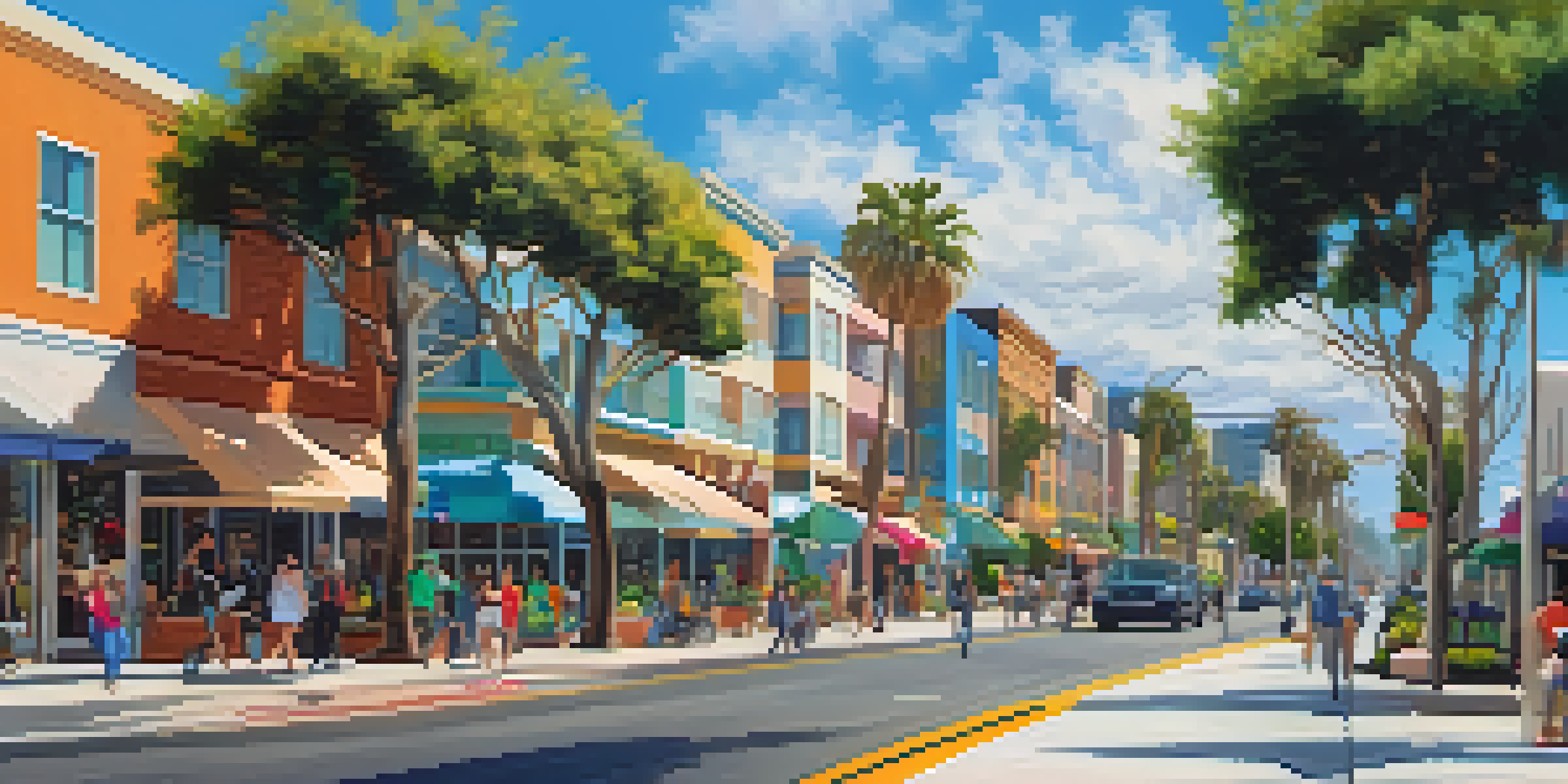Zoning Regulations and Their Impact on Santa Monica Development

What Are Zoning Regulations and Why Do They Matter?
Zoning regulations are rules set by local governments that dictate how land can be used. They play a crucial role in urban planning, determining whether an area can be residential, commercial, or industrial. Understanding these regulations is essential for developers, as they directly impact project feasibility and design.
Zoning is not a simple matter of regulation; it’s a way to manage the growth and development of our communities.
For instance, if a developer wants to build a new apartment complex in Santa Monica, zoning laws will dictate the allowable height, density, and even the type of amenities that can be included. These regulations help maintain the character of neighborhoods while also promoting orderly growth. Without them, cities could face chaotic development, leading to issues like overcrowding and traffic congestion.
In Santa Monica, where land is scarce and the population is growing, zoning laws ensure that development aligns with community goals. They are not just bureaucratic red tape; they are vital tools for balancing growth with livability.
The History of Zoning in Santa Monica
Zoning in Santa Monica has evolved significantly since the city's incorporation in 1886. Initially, land use was largely unregulated, leading to mixed-use areas where homes and businesses coexisted in close proximity. Over the years, as the city grew, the need for more structured zoning became apparent, resulting in the introduction of formal zoning laws in the early 20th century.

The first zoning ordinance came into play in 1922, aimed primarily at separating industrial activities from residential neighborhoods. This was a pivotal moment, as it laid the groundwork for the city's current zoning system, which balances various land uses while considering environmental and social factors.
Zoning Regulations Define Land Use
Zoning regulations set by local governments dictate how land can be utilized, influencing urban planning and development projects.
Today, Santa Monica's zoning framework reflects historical trends and contemporary needs, with ongoing updates to address issues like sustainability and affordable housing. The historical context of these regulations helps us appreciate their role in shaping the city's unique character.
Types of Zoning Regulations in Santa Monica
Santa Monica employs several types of zoning regulations, including residential, commercial, and mixed-use zones. Residential zones are designed primarily for housing, while commercial zones cater to businesses and services. Mixed-use zones combine both, enabling a vibrant community atmosphere where people can live, work, and play in close proximity.
Sustainable development is about more than just the environment; it’s about creating a quality of life that future generations can enjoy.
Additionally, Santa Monica has specific regulations for height, density, and setbacks, which dictate how tall buildings can be and how far they must be set back from the street. These rules help maintain the city's aesthetic appeal and ensure that new developments fit harmoniously within their surroundings.
Understanding these various zoning categories is essential for anyone looking to develop property in Santa Monica. Each type of zoning comes with its own set of regulations, which can significantly influence project design and approval processes.
How Zoning Regulations Affect Development Projects
Zoning regulations serve as a roadmap for developers, guiding them on what can be built and where. For instance, if a developer wants to construct a high-rise in a primarily low-rise area, they may face pushback from community members and city officials due to zoning restrictions. This underscores the importance of understanding local zoning laws before embarking on a project.
Moreover, zoning laws can impact the timeline and cost of development. If a project requires a zoning variance—an exception to the standard regulations—developers might encounter lengthy approval processes that delay construction and increase expenses. These potential hurdles make it critical for developers to engage with city planners early in their project.
Community Input Shapes Development
Active community involvement in zoning decisions ensures that the needs and values of local residents are considered in development proposals.
Ultimately, zoning regulations can either facilitate or hinder development initiatives. A proactive approach to understanding and navigating these rules can lead to successful outcomes that benefit both developers and the community.
Community Involvement in Zoning Decisions
Community involvement plays a vital role in shaping zoning decisions in Santa Monica. Local residents often have the opportunity to voice their opinions during public hearings and community meetings, which can significantly influence the development process. This engagement ensures that the voices of those who live in the area are heard and considered.
For example, when a new development proposal is made, community feedback can lead to changes in design or even a complete rejection of the project. This collaborative approach helps create a built environment that reflects the community's needs and values while also addressing potential concerns, such as traffic and environmental impact.
Furthermore, community involvement fosters a sense of ownership and pride among residents. When people feel that they have a say in their neighborhood's development, they are more likely to support initiatives that align with their vision for Santa Monica.
The Role of Sustainability in Zoning Regulations
Sustainability is becoming an increasingly important factor in Santa Monica's zoning regulations. The city has made significant efforts to integrate green building practices and environmentally friendly designs into its zoning codes. This shift reflects a broader commitment to combat climate change and promote a healthier living environment.
For instance, zoning regulations now encourage developers to incorporate sustainable materials, energy-efficient systems, and green spaces into their projects. These requirements not only help reduce the environmental impact but also enhance the quality of life for residents by creating more livable, enjoyable spaces.
Sustainability Drives Zoning Changes
Santa Monica's zoning regulations increasingly prioritize sustainability, promoting eco-friendly practices in new developments.
Moreover, by prioritizing sustainability, Santa Monica sets an example for other cities. The integration of eco-friendly practices into zoning regulations demonstrates that development can be both responsible and innovative, paving the way for a more sustainable future.
Future Trends in Santa Monica Zoning Regulations
As Santa Monica continues to evolve, so too will its zoning regulations. Future trends may include more flexible zoning categories that adapt to changing community needs, particularly in response to the growing demand for affordable housing and mixed-use developments. This adaptability could enhance the city's livability while maintaining its unique character.
Additionally, advancements in technology may influence zoning practices, with smart city initiatives integrating data-driven decisions into urban planning. This could lead to more efficient land use and better resource management, ultimately benefiting both residents and developers.

Ultimately, the future of zoning regulations in Santa Monica will likely reflect a balance between growth, sustainability, and community input. Continued collaboration between city officials, developers, and residents will be essential in shaping a vibrant, inclusive urban landscape.